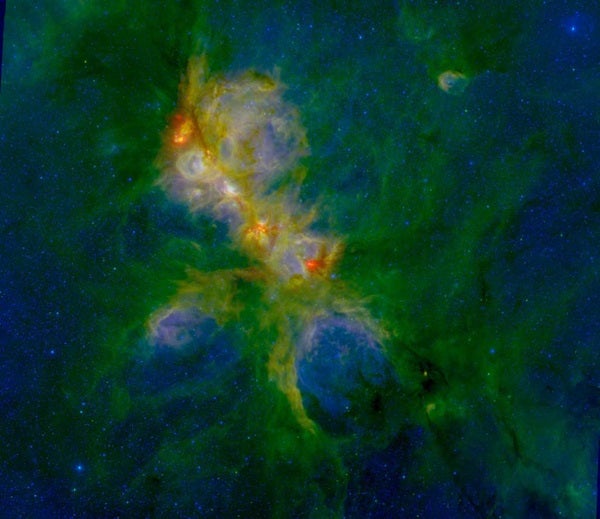The new study probed the Cat’s Paw Nebula (NGC 6334). This nebula contains about 200,000 Suns’ worth of material that is coalescing to form new stars, some with up to 30 to 40 times as much mass as our Sun. It is located 5,500 light-years from Earth in the constellation Scorpius.
The team painstakingly measured the orientation of magnetic fields within the Cat’s Paw. “We found that the magnetic field direction is quite well preserved from large to small scales, implying that self-gravity and cloud turbulence are not able to significantly alter the field direction,” said Hua-bai Li from the The Chinese University of Hong Kong.
“Even though they’re much weaker than Earth’s magnetic field, these cosmic magnetic fields have an important effect in regulating how stars form,” added T.K. Sridharan from the Hardvard-Smithsonian Center for Astrophysics (CfA).
The team observed polarized light coming from dust within the nebula using several facilities, including the Smithsonian’s Submillimeter Array (SMA). “The SMA’s unique capability to measure polarization at high angular resolution allowed access to the magnetic fields at the smallest spatial scales,” said Ray Blundell from the CfA.
“The SMA has made significant contributions in this field, which continues with this work,” said Qizhou Zhang from the CfA.
Because dust grains align themselves with the magnetic field, the researchers were able to use dust emission to measure the field’s geometry. They found that the magnetic fields tended to line up in the same direction, even though the relative size scales they examined were different by orders of magnitude. The magnetic fields only became misaligned on the smallest scales in cases where strong feedback from newly formed stars created other motions.
This work represents the first time magnetic fields in a single region have been measured at so many different scales. It also has interesting implications for the history of our galaxy.
When a molecular cloud collapses to form stars, magnetic fields hinder the process. As a result, only a fraction of the cloud’s material is incorporated into stars. The rest gets dispersed into space, where it is available to make new generations of stars. Thanks to magnetic fields, the star-forming process is more drawn out.










